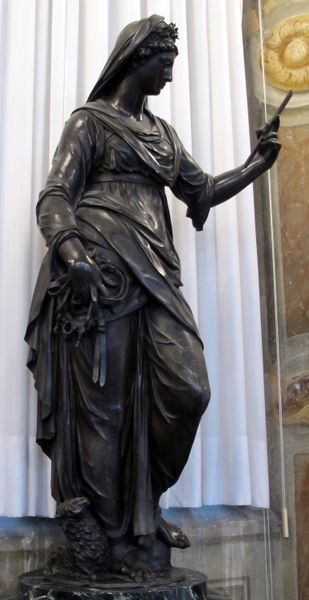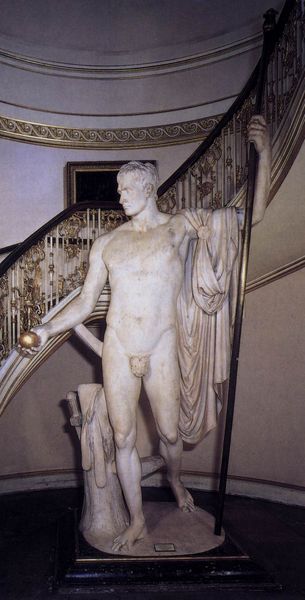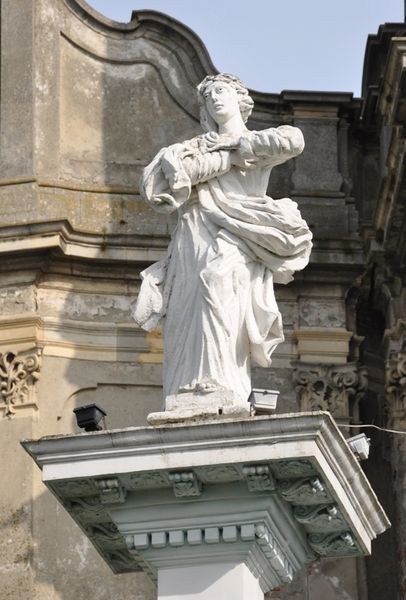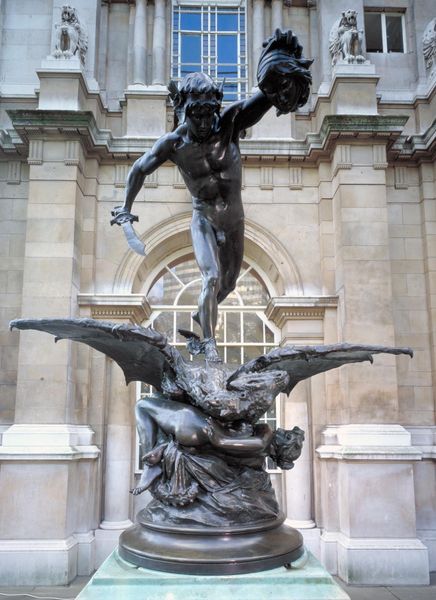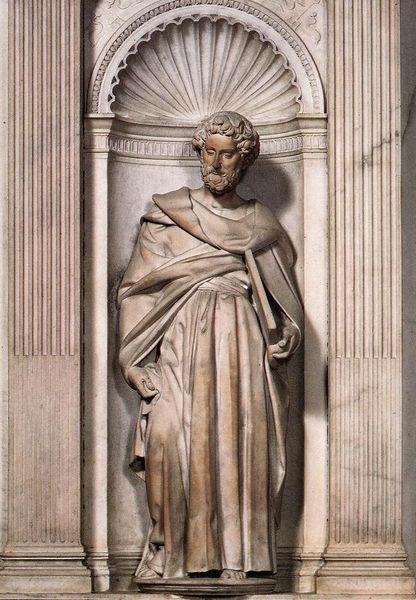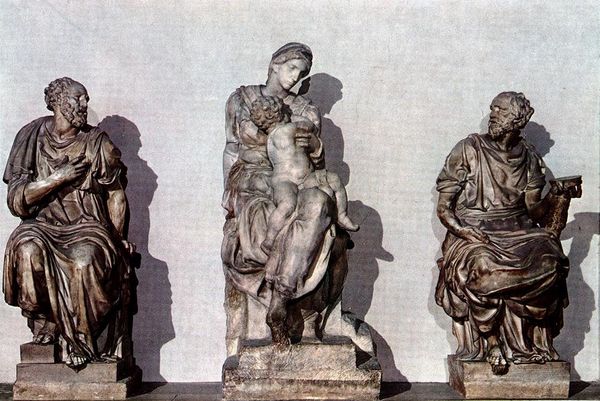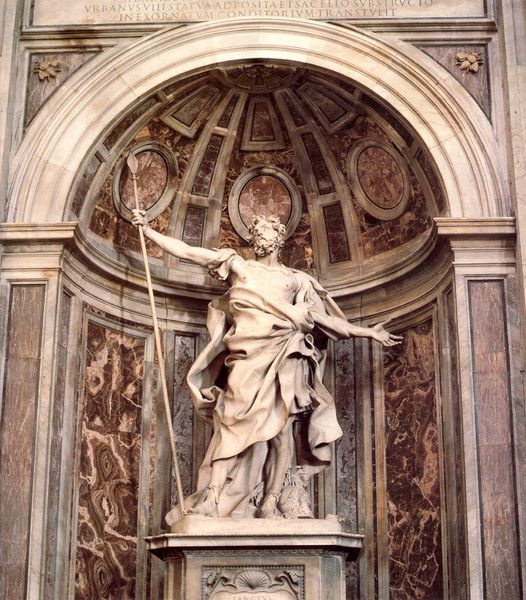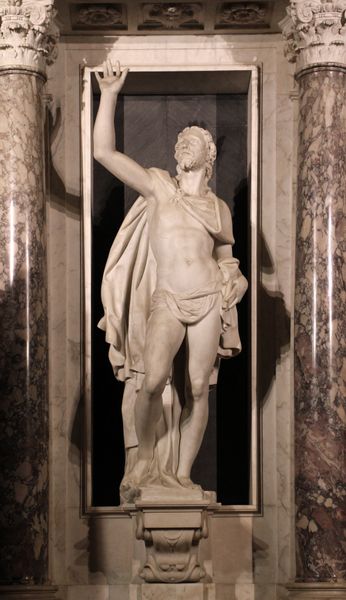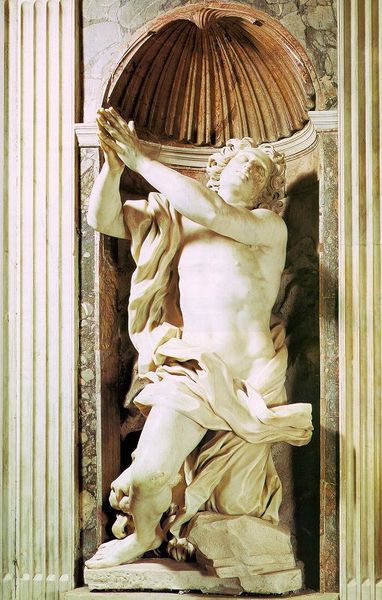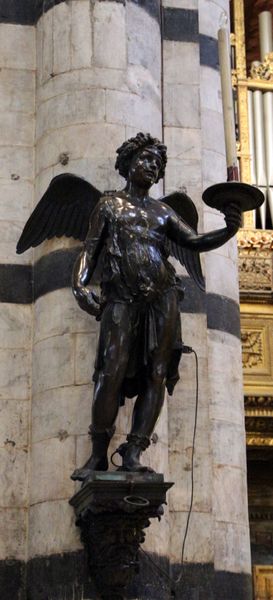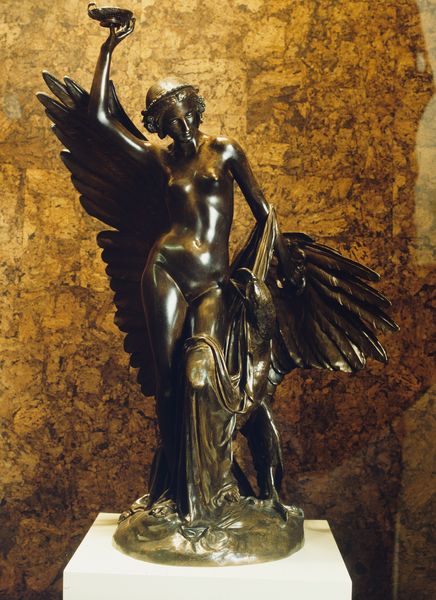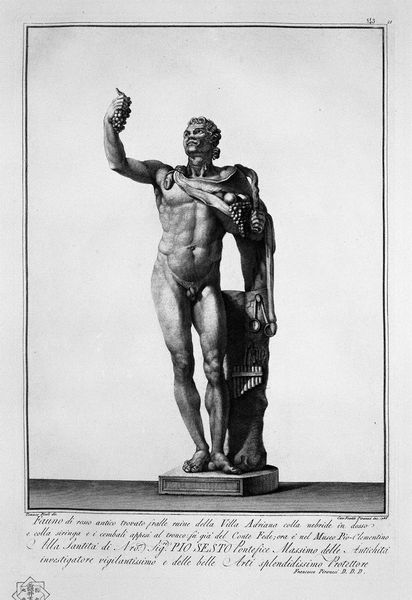
bronze, sculpture, site-specific
#
portrait
#
neoclacissism
#
statue
#
sculpture
#
memorial
#
bronze
#
sculpture
#
site-specific
#
history-painting
#
statue
Copyright: Public domain
Antonio Canova created this statue of Napoleon I, and the statue is replete with symbols of power and authority from antiquity. Napoleon is idealized in the nude, draped with classical garb, carrying a scepter, and bearing the caduceus in his left hand. The caduceus, often mistaken for the Rod of Asclepius, is a staff entwined by two snakes. This symbol has origins in ancient Greece, associated with Hermes, the messenger of the gods, and is a symbol of commerce, negotiation, and reciprocity. Its presence here harkens back to antiquity, linking Napoleon with the glory of past empires. Now, consider this symbol’s journey through time. The intertwined serpents and staff, a symbol of balance and duality, a reminder of the unconscious forces that shape our desires and ambitions. It speaks to how symbols are continually reinterpreted, reflecting our collective aspirations. The caduceus reminds us that symbols are not static, but living entities that evolve with us, as our understanding of the world deepens.
Comments
No comments
Be the first to comment and join the conversation on the ultimate creative platform.
